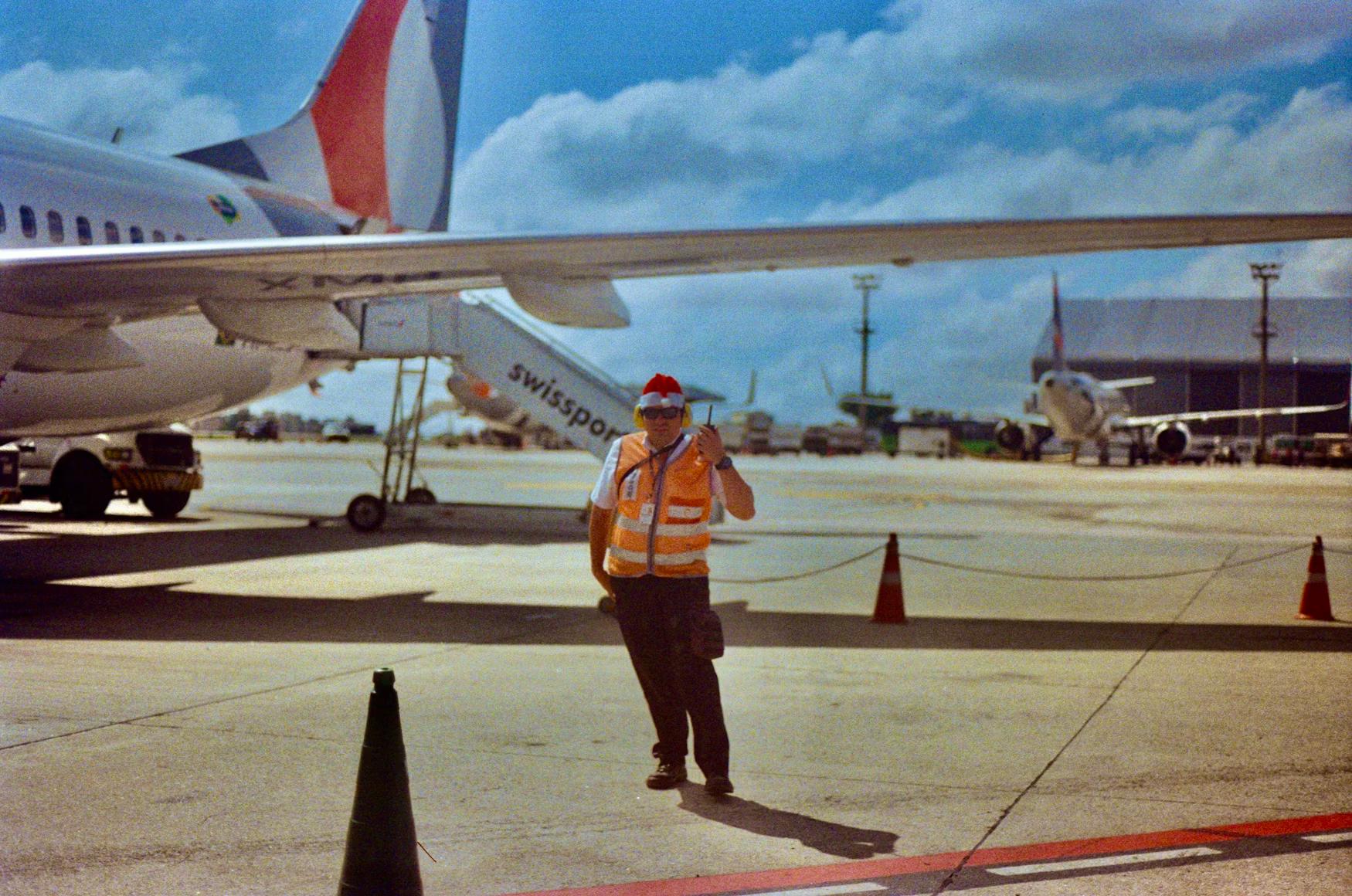
Private air travel represents a premium segment of the aviation industry, offering exclusivity, flexibility, and unparalleled convenience to discerning travelers. Unlike commercial airlines, private aviation caters to individuals and businesses seeking personalized air transportation solutions. Understanding private air travel statistics is crucial for aircraft manufacturers, charter companies, Fixed Base Operators (FBOs), and high-end travel service providers. This article compiles essential private air travel statistics for 2024-2025, providing insights into market size, fleet trends, passenger demographics, and the evolving landscape of luxury air travel.
General Private Aviation Statistics
Let's begin with an overview of the private aviation market and its key figures.
- The global business jet market is estimated to be worth over $34 billion in 2024, demonstrating the significant economic impact of private aviation. (Source: GlobeNewswire)
- North America holds the largest share of the private aviation market, accounting for over 60% of global business jet deliveries. (Source: Mordor Intelligence)
- The United States is the largest market for private jets, with over 15,000 business jets based in the country. (Source: National Business Aviation Association (NBAA))
- The number of private jet flights has been steadily increasing, with a notable surge in demand since 2020. (Source: WingX)
- Fractional ownership and jet card programs are popular options for accessing private aviation, offering flexibility without the full commitment of aircraft ownership. (Source: Flexjet)
- Charter flights represent a significant portion of the private aviation market, providing on-demand access to private jets for various travel needs. (Source: Private Jet Card Comparisons)
- The average age of a business jet is around 12 years, indicating a relatively young and modern fleet. (Source: Amstat)
- Private aviation contributes significantly to the economy, supporting hundreds of thousands of jobs and generating billions in economic output. (Source: NBAA)
- The COVID-19 pandemic accelerated the growth of private aviation, as individuals and businesses sought safer and more controlled travel options. (Source: McKinsey & Company)
Private Jet Fleet Statistics
Let's examine the composition and trends within the private jet fleet.
- The global business jet fleet is estimated to consist of over 22,000 aircraft in 2024. (Source: GlobalAir)
- Light jets are the most popular category of business jets, accounting for a significant portion of the active fleet. (Source: JetNet)
- Mid-size and super-mid-size jets are also widely used, offering a balance of range, cabin size, and operating costs. (Source: JetNet)
- Large cabin and ultra-long-range jets represent the premium segment of the market, catering to long-haul international travel. (Source: JetNet)
- Pre-owned aircraft sales are a significant part of the private jet market, offering cost-effective entry points to private aviation. (Source: Guardian Jet)
- New business jet deliveries are expected to increase in the coming years, driven by fleet modernization and market growth. (Source: Honeywell)
- Sustainable aviation practices are becoming increasingly important in private aviation, with manufacturers and operators exploring fuel-efficient aircraft and SAF. (Source: NBAA)
Private Aviation Passenger Statistics
Who are the primary users of private aviation, and what are their travel patterns?
- High-net-worth individuals and ultra-high-net-worth individuals are the primary users of private aviation for both business and leisure travel. (Source: Knight Frank)
- Corporate executives and businesses across various industries rely on private jets for efficient and flexible travel. (Source: NBAA)
- Charter clients include a diverse range of travelers, from families and groups to celebrities and sports teams. (Source: Air Charter Service)
- The average trip length in private aviation is around 2 hours, reflecting the efficiency and time-saving benefits of private jets. (Source: Business Jet Traveler)
- Popular destinations for private jet travel include business hubs, luxury resorts, and remote or underserved locations. (Source: GlobeAir)
- Peak seasons for private aviation often align with major holidays, special events, and business travel cycles. (Source: Paramount Business Jets)
- Passenger privacy and security are key drivers for choosing private aviation over commercial airlines. (Source: NetJets)
Private Aviation Operational Statistics
Let's examine the operational aspects and performance metrics of private aviation.
- Fixed Base Operators (FBOs) play a crucial role in private aviation, providing ground handling, fueling, and other essential services at airports. (Source: National Air Transportation Association (NATA))
- Private jet airports are often less congested than major commercial hubs, contributing to faster turnaround times and reduced delays. (Source: Atlantic Aviation)
- Empty leg flights, also known as repositioning flights, offer cost-saving opportunities for flexible private jet travelers. (Source: Jettly)
- Private jet charter pricing varies widely based on aircraft type, trip distance, and market conditions. (Source: Air Partner)
- Safety is paramount in private aviation, with stringent regulations and high operational standards overseen by aviation authorities. (Source: Federal Aviation Administration (FAA))
- Private jet maintenance is a critical aspect of operations, ensuring aircraft airworthiness and passenger safety. (Source: Duncan Aviation)
- Weather conditions significantly impact private aviation operations, requiring careful flight planning and potential schedule adjustments. (Source: Universal Weather and Aviation)
Regional Private Aviation Market Statistics
How does private aviation vary across different geographic regions?
- Europe is the second-largest market for private aviation, with significant business jet activity in countries like the UK, Germany, and France. (Source: European Business Aviation Association (EBAA))
- Asia-Pacific is a growing market for private aviation, with increasing demand from countries like China, India, and Singapore. (Source: Asian Business Aviation Association (AsBAA))
- The Middle East is a key region for private aviation, driven by wealth concentration and demand for luxury travel. (Source: MEBAA)
- Latin America shows potential for growth in private aviation, particularly in Brazil and Mexico. (Source: ABRAER)
- Africa's private aviation market is developing, with opportunities for expansion in key economies. (Source: AfBAA)
- Intra-regional travel is dominant in most private aviation markets, with flights concentrated within continents or geographic areas. (Source: WingX)
- Cross-border private jet travel is increasing, reflecting globalization and the interconnectedness of business and leisure activities. (Source: NetJets)
Private Aviation Trends and Technology Statistics
What are the emerging trends and technological advancements shaping private aviation?
- Urban Air Mobility (UAM) and electric vertical takeoff and landing (eVTOL) aircraft are attracting significant investment and are poised to disrupt short-range private air travel. (Source: Vertical Flight Society)
- Supersonic business jets are making a comeback, promising to significantly reduce travel times on long-haul routes. (Source: Boom Supersonic)
- Advanced Air Mobility (AAM) is expanding the scope of private aviation, encompassing new aircraft types and operational concepts. (Source: NASA)
- Blockchain technology is being explored for applications in private aviation, such as aircraft maintenance tracking and secure transactions. (Source: IBM)
- Artificial intelligence (AI) is being used to optimize flight planning, enhance safety, and personalize the passenger experience in private aviation. (Source: Accenture)
- Sustainable aviation fuel (SAF) adoption is gaining momentum in private aviation, driven by environmental concerns and corporate sustainability goals. (Source: World Economic Forum)
- Cabin connectivity is a must-have for private jet travelers, with demand for high-speed internet and seamless communication during flights. (Source: Satcom Direct)
Challenges and Considerations for Private Aviation Statistics
What are the key challenges and important considerations in the private aviation sector?
- High operating costs and aircraft acquisition expenses remain significant barriers to entry for some potential private aviation users. (Source: Liberty Jet)
- Regulatory compliance and safety standards are stringent in private aviation, requiring significant investment in training and operational infrastructure. (Source: FAA)
- Environmental concerns and pressure to reduce carbon emissions are growing, requiring the private aviation industry to adopt sustainable practices. (Source: European Commission)
- Economic fluctuations and geopolitical events can impact demand for private aviation, creating market volatility. (Source: General Dynamics)
- Workforce shortages, particularly for pilots and maintenance technicians, are a growing concern in the aviation industry, including private aviation. (Source: CAE)
- Airport access and infrastructure limitations at certain destinations can restrict private aviation operations. (Source: ACI)
- Public perception and scrutiny of private aviation's environmental impact require proactive communication and sustainability efforts from the industry. (Source: Corporate Jet Investor)
Strategies for Private Aviation Businesses using Travel Statistics
Here are key strategies for private aviation businesses to leverage private air travel statistics:
- Target growth markets: Focus marketing and sales efforts on regions with increasing demand for private aviation, such as Asia-Pacific and emerging economies.
- Offer flexible access solutions: Expand fractional ownership, jet card, and charter programs to cater to diverse customer needs and budgets.
- Emphasize sustainability initiatives: Promote SAF adoption, carbon offsetting programs, and fuel-efficient aircraft to attract environmentally conscious clients.
- Leverage technology for personalization: Utilize data analytics and AI to tailor services, enhance customer experience, and optimize operations.
- Focus on operational efficiency: Streamline FBO services, optimize flight planning, and manage costs to improve profitability.
- Enhance safety and security measures: Invest in advanced safety technologies and training to maintain the highest safety standards.
- Communicate value proposition: Clearly articulate the benefits of private aviation, including time savings, flexibility, privacy, and safety, to target clientele.
Bottom Line
Private air travel is a robust and evolving sector within the aviation industry, driven by the demand for premium, personalized, and efficient air transportation. Private air travel statistics offer invaluable insights for businesses operating in this dynamic market, enabling them to understand market trends, passenger behavior, and operational benchmarks. As private aviation continues to innovate with new technologies and adapt to sustainability imperatives, data-driven strategies will be crucial for sustained success and growth in this high-flying industry.


